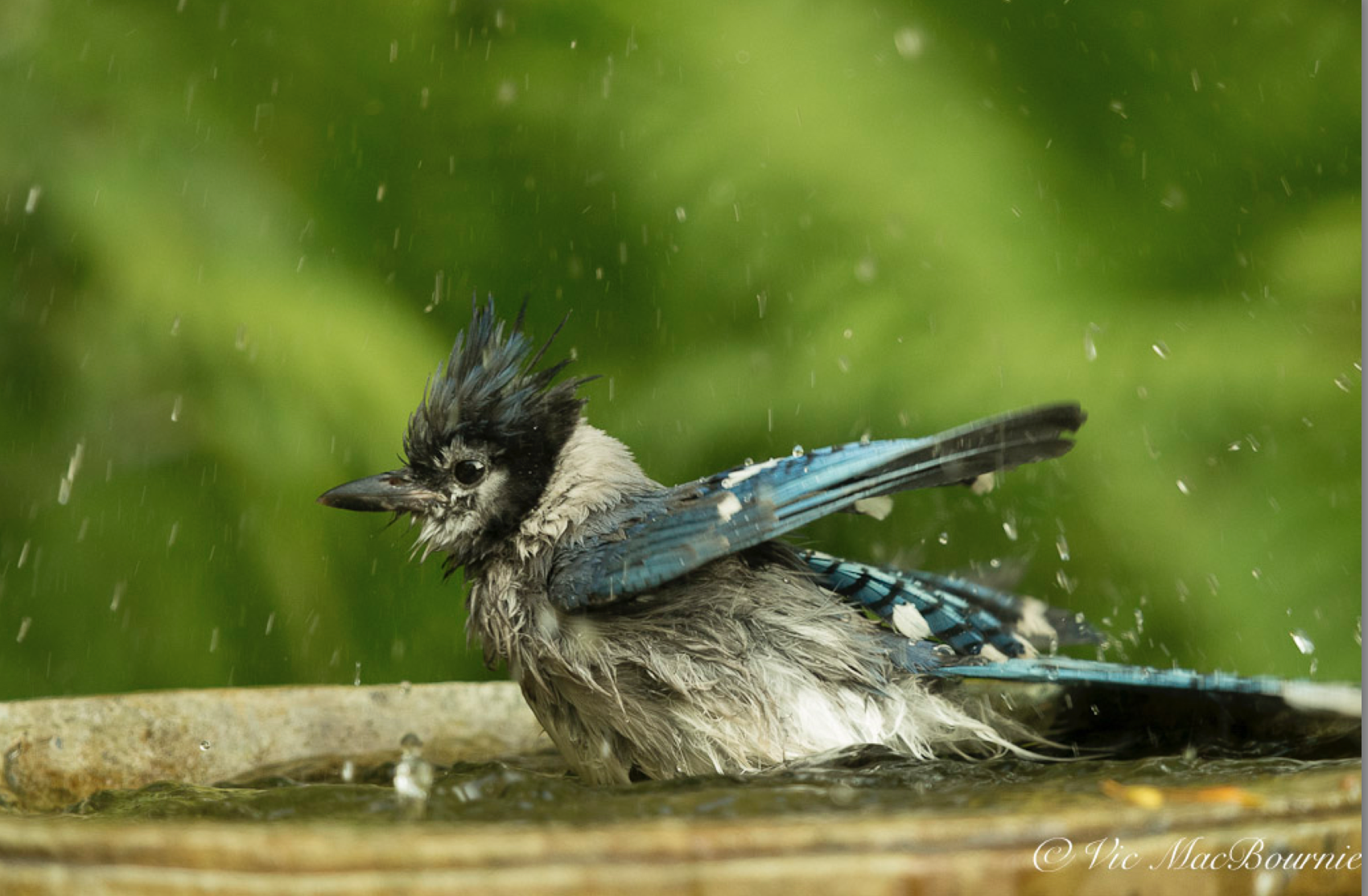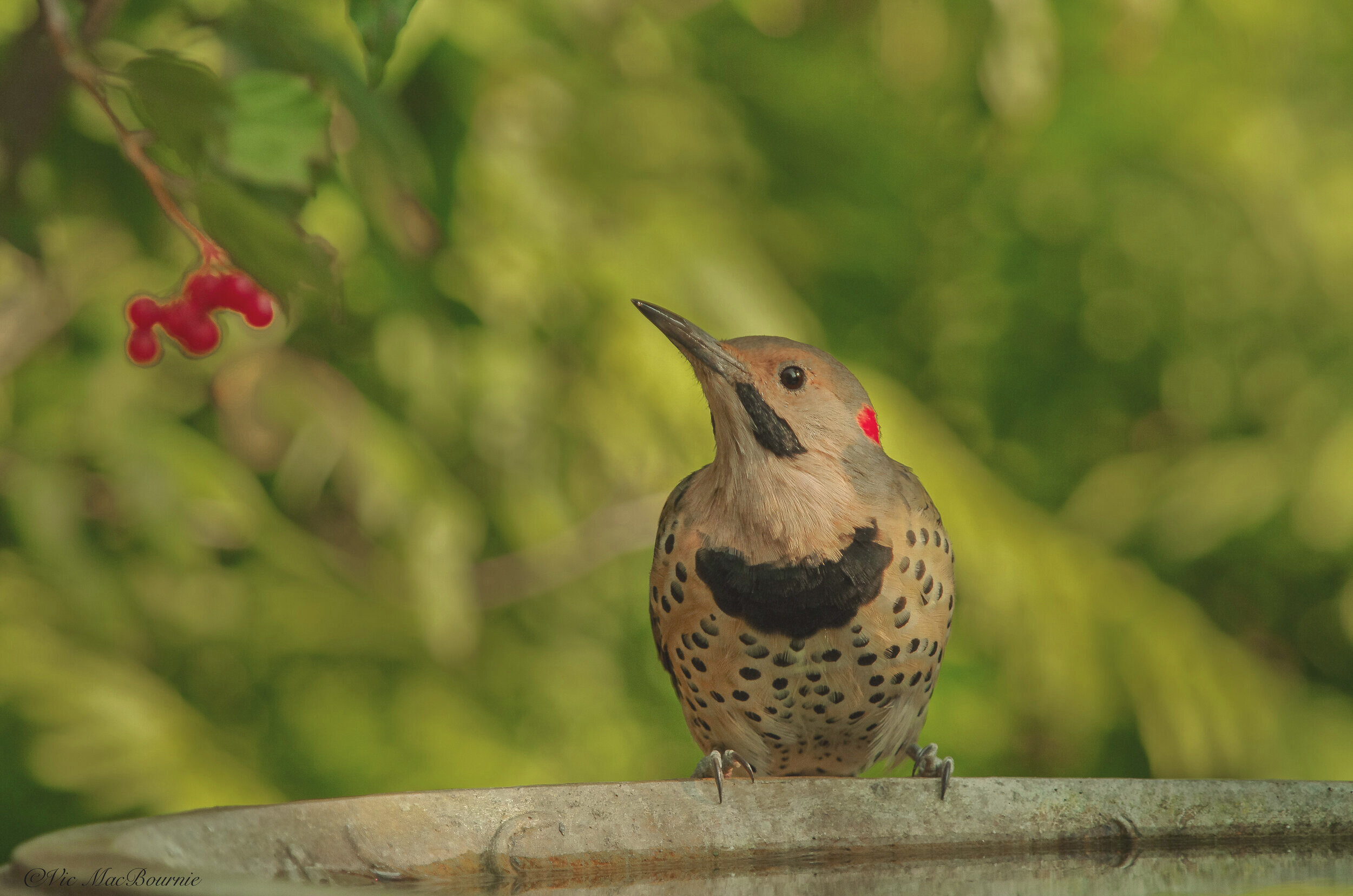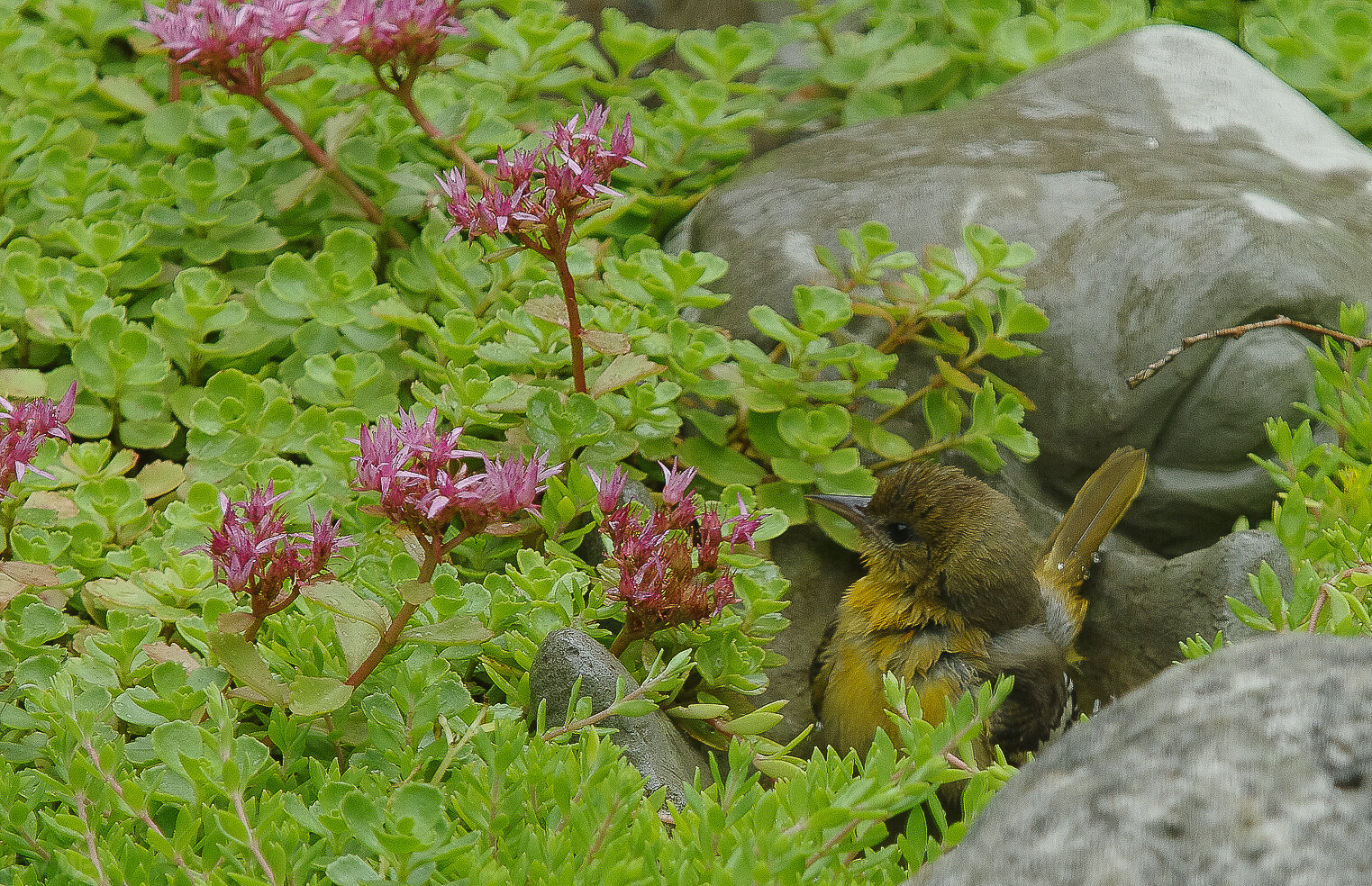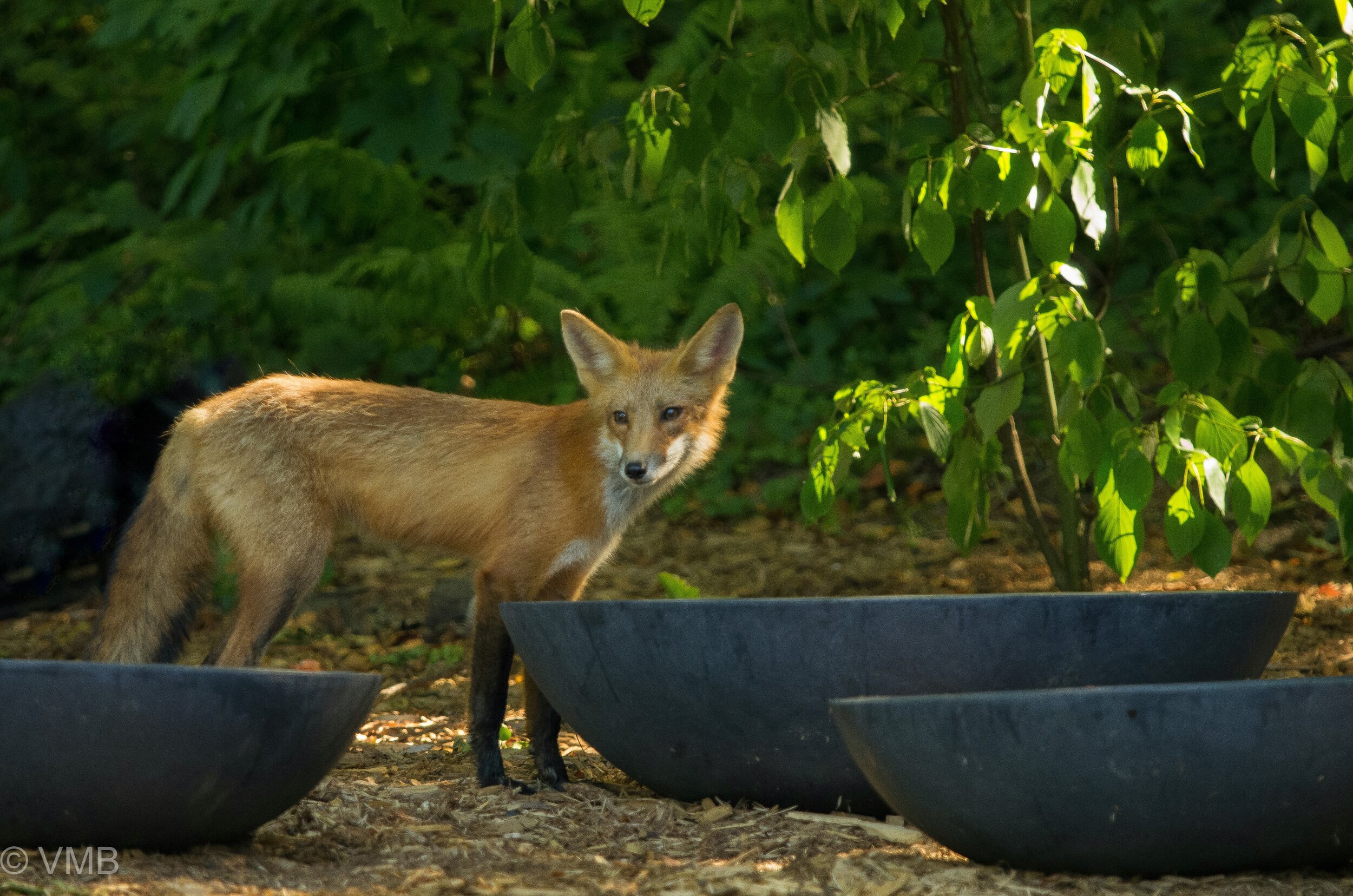Tips for using water to attract birds and other wildlife
Provide a reliable source of water in your wildlife garden
There are few things you could do for birds and other wildlife more important than having a reliable source of fresh, clean water in your woodland garden.
Birds require water not only for drinking but maintaining the oil in their feathers to help them fly, provide a form of waterproofing and to keep them warm in winter.
Our backyard birds do not have sweat glands, so they need less water than mammals. But, most of the birds that visit our woodland gardens still need to drink at least twice a day to replace water lost through respiration and in their droppings.
Although backyard birds have developed brilliant ways of getting water on their own, they still appreciate our efforts at providing water for them in our backyard landscapes.
We’ve seen them wading in to the shallow edges of ponds and streams for a quick drink, but have you ever watched them in the morning take water droplets that formed on leaves overnight? That’s great fun. I once watched a bird drink from one of my large hosta leaves that had gathered a large amount of water overnight.
How birds drink from our bird baths
Most birds will drink at your bird baths by dipping their bill in water and putting their head back to swallow it.
Swallows, swifts and other aerial species will actually drink on the fly by dipping their bills into the water and scooping up water in its beak.
Unlike seed-eaters, insectivorous birds get most of their water needs in the food they eat. Seed eaters, the most common birds in our gardens, have very dry diets and therefore will rely on our sources of water considerably more.
Blue Jays love their bird baths. Here is one of our resident blue jays diving in for a good soaking.
“I hope you love birds too. It is economical. It saves going to heaven.”
Although a pond with a waterfalls is the best choice to attract birds, not everyone has the room for a large pond, or the time to properly care for it.
So, what are the alternatives? It’s not uncommon to see birds flocking to natural water sources like puddles after a rain. In some areas without a reliable source of water, such puddles can be vital to their existence. Plus, like our kids, it’s fun to splash around in a puddle after a rain.
But we don’t want to force them to rely on rain puddles for their daily bath. In the garden there are many alternatives that are simple yet effective in bringing birds into your yard.
For more suggestions and some of my favourite garden things, be sure to check out my Favourite Things post.
One of the benefits of providing a reliable water source is that it will not only help attract birds to visit your yard and possibly set up a nest there, it will attract birds that might not normally not come to your woodland garden. Many of the most desirable birds are not attracted to your seed-based feeders because they eat mostly insects. Even heavy seed-eating birds will often switch to primarily insects during the spring when they are raising their young.
Warblers and blue birds, for example, are a good example of insect-eating birds that you may not see often in your woodland garden. Although the insects provide them with water in their digestive systems, they will be attracted to water for the important task of bathing. Fresh water is vital to attract all birds including warblers and bluebirds to your garden.
Water is especially important in winter. Bathing can mean the difference between life and death for many birds during the winter months. When the birds preen their feathers they are actually carefully rearranging them and spreading oil from the preen gland. This keeps the birds waterproofed and traps an insulting layer of air underneath the feathers to help keep them warm.
If the water in your garden moves, either through a drip system, a sprinkler or a bubbling rock, more birds will be attracted to your water sources.
A simple birdbath is a perfect place to start.
Birdbaths are an important addition to any garden that welcomes birds. They can be as simple as an overturned garbage lid, or elegant enough to serve double duty as a piece of garden art. A simple rock with a natural pool is ideal for the woodland garden.
Birdbaths are an easy yet simple solution to provide water in our woodland gardens
Watching the birds visiting the birdbath will bring hours of enjoyment to the backyard experience. Establish it close to where you regularly sit and the birds will eventually feel comfortable enough to take a drink or have a bath near enough for your enjoyment. A shaded spot in the garden preferable under a mid-storey tree with low hanging branches will help keep the water cooler and fresher for birds, and give them a place to land before going to the birdbath.
It’s also a good idea to have another bird bath in a more secluded area for more shy birds not yet comfortable enough with your presence to come in close. If you have a large tree near where you sit, consider a hanging birdbath.
I have found that adding a drip system (amazon link) to an existing birdbath, or one of the many new solar fountains also available at Amazon, you’ll find the birds will get the most enjoyment and use out of the bird bath.
Although a drip system is an excellent way to attract birds, I decided to turn a dripper into a recycling solar fountain that proved even more effective. You can read about the DIY conversion in this post on my website.
During winter months, I have found that adding a heater to the birdbath makes a huge difference. In fact, I have a separate post here where I built a small heated bird bath that doubles as an outdoor photographic studio. As we have talked about earlier, the attraction of a reliable water source in the winter, is critical to attracting all the neighbourhood birds. Remember to locate the birdbath close to an electrical outlet so that you can keep the heater plugged in at all times. Most do not use much electricity at all, turning off and on when necessary and only heating the water enough to keep it from freezing.
On-ground water sources are vital for birds and wildlife
Another extremely important decision for the birds, mammals and reptiles in your garden is to add on-ground water sources. These water sources could be as simple as a sunken old Tupperware container or plastic garbage can lid, or as involved as a small in-ground vinyl pond. Be sure to provide a way for birds and small mammals to escape the water should they fall in.
A young Baltimore Oriole takes a bath in one of our on-ground water sources.
The importance of on-ground water sources was made clear to me one afternoon when a mother Baltimore oriole brought her entire family to one of our on-ground water sources. One of the young orioles is pictured here bathing in one of our moose’s ears. (Each ear acts as a small water pond) All of the young orioles took turns having a bath while mom stood by on the watch for possible dangers.
A recent addition to the garden are a grouping of three large water bowls. I originally bought them more for aesthetics (think Japanese water bowls) but I am amazed how many animals and birds are using them. They are much deeper than a traditional bird bath but I have put a couple of rocks in them to allow critters easy escape if they fall in.
When I put in the waterbowls in, I had no idea that they would become a “bird bath” for a large Goshawk that decided this spring that the bowls were a perfect size birdbath for this large bird of prey. I’m hoping he is a regular to the backyard. We’ve seen him on the hunt several times now.
On another day, a fox came by to drink from the large water bowl. I have seen the fox there regularly so I suspect it was using the water bowls on a daily basis. You can go here for a separate blog post about the fox and the waterbowls. I have also included a picture of the fox at the water bowls.
The bird baths are really just the first steps to providing a source of water in your garden.
In our garden, we have added two more water sources that have provided endless enjoyment without the hassle of a full backyard pond.
Patio container provides water source and place for new plants
One of my favourite water sources is our patio water container that not only provides a source of water but, more importantly, allows me to enjoy a few water plants, including a water lily and miniature bull rush that I would not be able to grow without this water source. It is a simple concrete container with an inexpensive solar pump I purchased several years ago that provides me with constantly moving water most days. The moving water is enjoyable to listen to, enticing for birds and helps to keep the mosquitoes at bay. The bull rushes and watr lily leaves attract dragon flies and other more unusual insects which in turn become food for the birds.
These large water bowls were originally going to be used primarily for aesthetics until a large Goshawk decided they were perfect as an oversized raptor birdbath. Before long, our neighbourhood fox was using them as well. There is a link above for a separate post on the fox and the water bowls.
All the water and plants are removed in the fall. Some of the plants I have managed to winter over in the shed, others are purchased in the spring. Because the patio water container is small, I need only a few plants each year to create a beautiful miniature water-garden container. There are no fish in the container but the water stays perfectly clear. It is important to have enough plants to cover the surface of the water to shade it enough to eliminate the growth of algae. The choice of plants here is endless, so if you are looking to experiment with some new plants, I would definitely recommend a water container garden.
A few water hyacinths and small water lily is usually all it takes for mine to stay clear and fresh all summer. I have some miniature rushes and a little duck weed in this year’s container. Be sure to provide access for any small critter that might fall into the water.
The Patio water container is too deep for birds to safely bathe in, but some birds do go on the plants and get drinks from there.
Birds, squirrels and humans love a bubbling rock
Our final water source in the yard is a small bubbling rock that once again is run off a solar fountain. It’s a larger solar fountain (amazon link) that includes a battery to allows me to run the bubbling rock during the evening if I need to. I would love a much larger bubbling rock but this one gets the job done and was primarily a do-it-yourself project. It’s main purpose is to use the moving water to attract birds and other wildlife to the garden. It sits in the middle of our birch glen (three clump birch trees that form a lovely canopy that helps keep the water and the container in shade for most of the day.)
Installing a large bubbling rock can be an expensive proposition involving heavy-duty industrial equipment best done by a landscaping company, but it is certainly a great investment and one to give serious consideration if you want to attract birds and drown out neighbourhood noise while not having the responsibility of maintaining an open pond.
The water reservoir is sunk into the ground and covered, so it stays cool even on the hottest days.
My bubbling rocks acts a little like a head water for a dry river bed. It works similarly to a disappearing waterfalls (see below) in that it creates moving water and the impression of a stream and pond without the all the hassle.
Although I have seen birds, chipmunks and squirrels drink from the bubbling rock, they much prefer to drink from two small pools at the foot of the bubbling rock where the water spills into the reservoir.
I have seen a large toad hanging out in those same pools beneath the bubbling rock. So it’s maybe more popular than I imagine.
Disappearing waterfalls creates the perfect environment for birds
Along the same line as the bubbling rock, is a disappearing waterfalls. (Amazon Link) Some people call it a pondless stream. These can be brilliant, providing both the sound and enjoyment of moving water, without the worry that comes with having to deal with a pond. The water cascades over a waterfalls or a small group of waterfalls into an underground reservoir that is hidden by rocks and then recycled back to the top.
These are especially useful if you have a sloped property and can make the waterfalls look natural.
In my opinion, having the waterfalls rise out of a flat piece of property just doesn’t work as well as having a natural slope where the waterfalls looks like it has always been there. This is the reason I chose to go with a bubbling rock rather than the waterfalls. The bubbling rock gives the impression of a spring rising out of the ground.
I do, however, have the perfect place at the back of the property where there is a three- or four-foot hill that would be ideal for a disappearing waterfall.
The waterfalls offer nooks and crannies for different-sized birds to find their favourite spots to bathe or get a drink. The noise of the waterfalls attracts the birds and the moving water helps to keep the water oxygenated and fresh. It also helps to keep mosquitoes at bay while attracting a large number of birds and other woodland creatures.
It’s not hard to see how important water is to creating a successful plan to bring in as many varieties of birds into your yard as possible. Our woodland garden has benefitted from multiple sources of water to attract everything from raptors to humming birds. Ensuring a reliable, fresh water source throughout the seasons, but especially in the cold of winter and extreme heat of the summer, is probably the most important addition to your garden.
You can invest in beautiful, elegant bird baths or simply use an old container that holds water. Unlike a bird feeder that requires you to purchase food regularly to keep the birds invested in your property, bird baths require only a regular cleaning and a bit of water.
Certainly, one of the cheapest forms of entertainment and satisfaction is watching a family of birds enjoying your labour of love.
This page contains affiliate links. If you purchase a product through one of them, I will receive a commission (at no additional cost to you)




